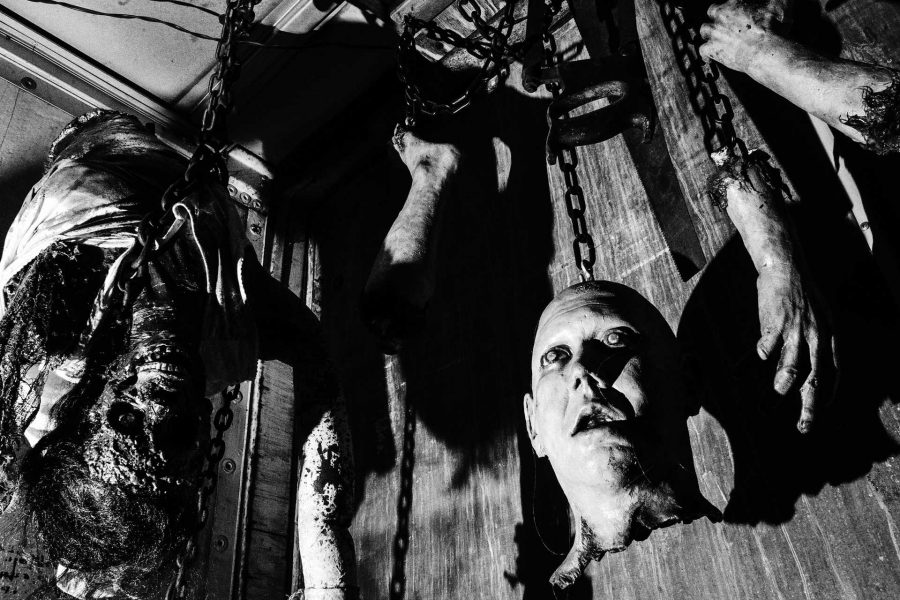Yerington: There is an undying love for zombies
Zombies serve not only as simple flesh-eating entertainment, but as way to expressions of social anxieties of our modern life, no matter if its 1968 or 2017, the undead will always find a place in our world.
Decorations are seen hanging from the ceiling in Circle of Ash’s haunted house on Sunday, Oct. 22, 2017. The morbid decor throughout the venue added to the customer experience at the haunted house.
October 29, 2018
As the spooky season is upon us, I was going through my many favorite Halloween movies and was struck by the number of zombie films there are to choose from. I was also surprised by the amount of zombie media there is across every streaming services. I was also shocked to see the number of graphic novels, video games, and cooking books, all with one thing in common: ZOMBIES.
We as a society must love the undead.
I felt curious about why this creature, out of all the others, is the most common and most profitable in our society. According to NBC News, zombie content across all media (movies, TV, literature, costumes, etc.) is worth $5.74 billion. With a market that wide, there must be a reason this creature of horror has not left the spotlight in half a century.
I knew no one better to ask these undead questions than University of Iowa Professor Brooks Landon, who teaches a zombie-metaphor class. When asked what the “zombie” metaphor means to him, Landon responded, “It’s the Swiss Army knife of metaphors, meaning it can be out to a zillion different uses. It’s also a very ‘safe’ metaphor, as it is terribly difficult to create sympathy for zombies.” These various different uses ring true when you look at some of the many stages zombies have taken up.
RELATED: UI student’s Etsy shop startup to be spookily themed
The undead have been terrifying humanity for centuries according to myth, but they became the flesh-eating beings they are today due to George Romero’s 1968 Night of The Living Dead film and the following films he created. Romero’s version of these undead monsters is what Landon says managed to catch the crazed zeitgeist of the late 60s perfectly.
The metaphor of the zombie when Romero created them was a comment of race and later consumerism, but that metaphor has changed a lot over the years. TV channels such as AMC have series such as “The Walking Dead”, “Fear The Walking Dead”, and even Disney has a zombie-themed movie named Z-O-M-B-I-E, about dancing zombie teens in high school. When asked how zombies can be transferred over such large demographics, Landon said, “Zombies are ‘modern’ (contemporary) monsters, more ‘appropriate’ to current social and political contexts than the golden oldie monsters such as vampires and Frankenstein creatures.”
RELATED: Point-Counterpoint: Are haunted houses too spooky to enjoy?
When asked how the metaphor has evolved over these many decades, Landon responded with, “As difficult as it is to create sympathy for actual zombies, there are an increasing number of narratives that cast the zombie ‘condition’ in sympathetic terms. An increasing number of narratives are featuring some degree of ‘cures’ for zombies.”
On Max Brooks’ website, author of the best-selling novel World War Z, refers to zombies as a way to “reflect our very real anxieties of these crazy scary times. A zombie story gives people a fictional lens to see the real problems of the world. You can deal with societal breakdown, famine, disease, chaos in the streets, but as long as the catalyst for all of them is zombies, you can still sleep.”
Zombies serve not only as simple flesh-eating entertainment, but as a way to express social anxieties of our modern life. No matter if it’s 1968 or 2017, the undead will always find a place in our world.






